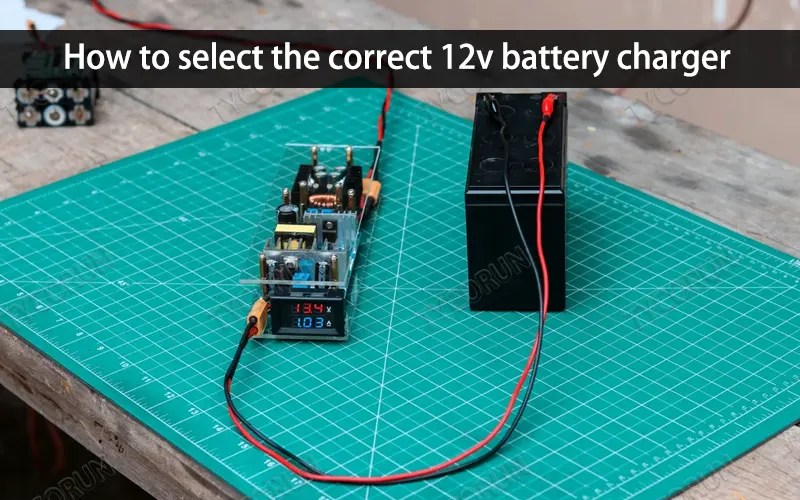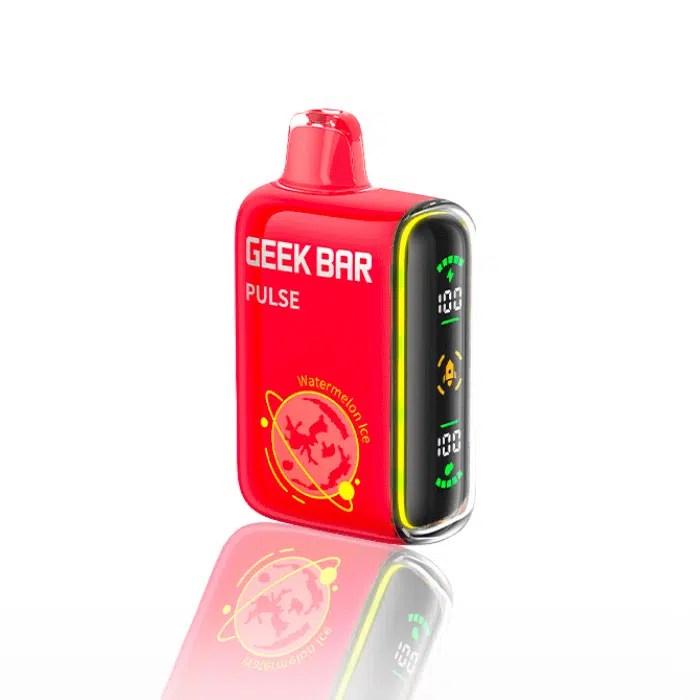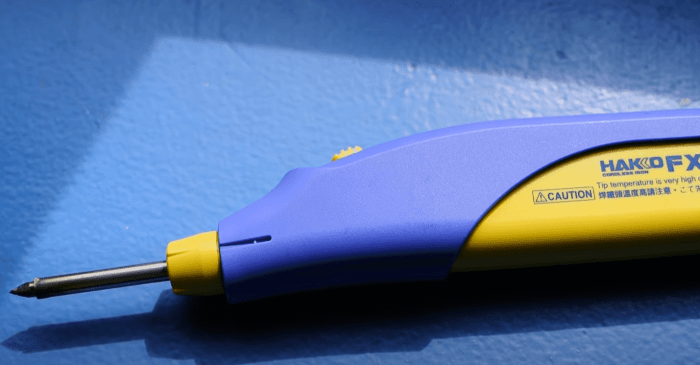How to charge 12V battery effectively is crucial for maintaining its longevity and ensuring its reliable operation. This comprehensive guide delves into the intricacies of 12V battery charging, from understanding different battery types to mastering various charging techniques. We’ll explore the fundamental principles of charging, safety precautions, and the selection of the right charger. Equipped with this knowledge, you’ll be empowered to confidently handle the charging process for optimal battery performance.
Different 12V battery types, such as lead-acid and lithium-ion, have unique charging requirements. Understanding these differences is paramount for successful charging. This guide will Artikel the specific needs of each type, allowing you to tailor your charging approach for maximum results. Proper charging techniques are not just about getting the battery charged, but also about preserving its lifespan and ensuring its continued functionality.
We’ll explore various methods, from simple trickle charging to more complex bulk charging, and examine the optimal approach for different situations.
Introduction to 12V Batteries
V batteries power a wide array of devices, from small electronics to large vehicles. Understanding the different types of 12V batteries and their characteristics is crucial for proper maintenance and operation. Choosing the right battery depends on the specific application and the required performance.A 12V battery, despite its common usage, encompasses various chemistries, each with unique attributes. The most prevalent types include lead-acid and lithium-ion batteries, and their differences impact their lifespan, charging requirements, and suitability for different applications.
12V Battery Types
Different battery chemistries exhibit varying characteristics, influencing their application suitability. Lead-acid batteries, a common choice for their affordability, have a relatively shorter lifespan compared to other chemistries. Lithium-ion batteries, on the other hand, offer longer lifespans and faster charging capabilities, but come with a higher initial cost.
Battery Characteristics
Several key characteristics distinguish different 12V battery types. Lifespan is a critical factor, with lithium-ion batteries typically outlasting lead-acid batteries. Charging requirements also differ, with lithium-ion batteries often needing sophisticated charging systems to prevent damage. Factors like depth of discharge (DOD) and temperature also impact battery performance and lifespan.
Common Applications
V batteries are widely used in various applications. They power vehicles like cars and motorcycles, as well as smaller devices like portable power tools and recreational vehicles. Backup power systems and security systems also rely on 12V batteries for their operation.
Comparison Table
| Characteristic | Lead-Acid | Lithium-ion |
|---|---|---|
| Lifespan | Generally shorter, needing replacement more frequently. | Longer lifespan, potentially lasting several times longer than lead-acid. |
| Charging Requirements | Relatively straightforward charging, but sensitive to overcharging. | Require specialized chargers to prevent damage. Faster charging cycles are often possible. |
| Cost | Generally lower initial cost. | Higher initial cost, but potentially lower long-term costs due to extended lifespan. |
| Weight | Heavier than lithium-ion batteries of comparable capacity. | Lighter than lead-acid batteries of comparable capacity. |
| Maintenance | Often require periodic maintenance, such as checking electrolyte levels. | Require less maintenance, typically less prone to issues requiring intervention. |
| Environmental Impact | Can have higher environmental impact due to the lead content. | Generally have a lower environmental impact due to the absence of heavy metals. |
Understanding Charging Principles

Charging a 12V battery involves a controlled transfer of electrical energy to replenish its stored chemical potential. This process requires a careful understanding of voltage, current, and time to avoid damaging the battery. Proper charging techniques are crucial for maintaining battery health and lifespan.Charging a 12V battery is fundamentally about restoring the chemical balance within its cells. This is achieved by forcing a current through the battery in a controlled manner, which counteracts the discharge process.
Crucially, the rate and duration of this charging process directly impact the battery’s longevity.
Charging Fundamentals
The core principles of charging a 12V battery revolve around voltage, current, and time. Voltage, measured in volts, represents the electrical potential difference driving the current flow. Current, measured in amperes, quantifies the rate of electron movement. Time, measured in hours, dictates the duration of the charging process. These three parameters are intricately linked, influencing the charging rate and the battery’s overall health.
Role of Voltage, Current, and Time
Voltage provides the impetus for current flow. A sufficient voltage is necessary to overcome the internal resistance of the battery and initiate the charging process. Current determines the rate at which the battery accepts charge. Higher current leads to faster charging, but excessive current can damage the battery. Time is crucial in ensuring a complete charge without overcharging.
Different charging methods utilize varying combinations of voltage and current over time to achieve optimal results.
Importance of Proper Charging Rates
Charging rates directly impact battery health. Rapid charging, while convenient, can generate excessive heat, potentially damaging the battery’s internal components. Conversely, excessively slow charging can lead to prolonged charging times and may not fully restore the battery’s capacity. Optimizing the charging rate, based on the battery’s capacity and type, is essential for maintaining its long-term performance. An analogy: Imagine filling a water tank.
A strong stream of water (high current) fills it quickly, but could potentially damage the tank. A gentle trickle (low current) takes longer but is less damaging. Similarly, appropriate charging rates ensure the battery’s longevity.
Charging Process Analogy
Consider a water reservoir. The water level in the reservoir represents the battery’s charge. If the reservoir is empty, we need to add water. The water pump represents the charging source, providing the pressure (voltage) to push the water (current) into the reservoir. The rate at which the water fills the reservoir is analogous to the charging rate.
A rapid fill could damage the tank, while a slow fill takes longer but poses no immediate risk. The time taken to completely fill the reservoir is comparable to the charging time, ensuring the battery reaches a fully charged state without risk.
Potential Dangers of Improper Charging, How to charge 12v battery
| Improper Charging Technique | Potential Dangers |
|---|---|
| Overcharging | Excessive heat generation, potential damage to battery plates, reduced lifespan, and even fire hazard. |
| Undercharging | Incomplete charge, leading to reduced battery capacity and performance over time. |
| Using incorrect charger voltage | Overcharging or undercharging, potentially causing significant damage to the battery. |
| Charging at excessively high current | Overheating, damaging internal battery components, and potential for explosion. |
| Charging a damaged battery | Potential for short circuits, overheating, or explosion. |
Improper charging practices can lead to significant damage to the battery. Understanding these potential dangers and adhering to proper charging techniques is crucial to maintaining battery health.
Different Charging Methods
Different charging methods are crucial for maintaining the health and longevity of 12V batteries. Proper charging techniques prevent overcharging, which can damage the battery’s internal components, and undercharging, which can lead to reduced capacity and premature failure. Understanding the nuances of each method allows for optimal battery performance in various applications.Understanding the different charging methods helps ensure the battery is charged effectively for its intended use.
Each method has its strengths and weaknesses, and the optimal choice depends on the type of battery, the desired charging rate, and the application’s requirements. For instance, a deep-cycle battery used in a solar-powered system will require a different approach than a car battery.
Common Charging Methods
Various methods are employed for charging 12V batteries, each with its own advantages and disadvantages. These methods range from simple trickle charging to more complex bulk and float charging. Choosing the correct method is crucial for the battery’s long-term health and performance.
- Trickle Charging: This method involves a slow, constant charging current, typically used for maintaining a fully charged state. It’s suitable for batteries that are only partially discharged or need to be kept topped up. Advantages include minimal stress on the battery and suitability for long-term storage. Disadvantages include slow charging times and potential inefficiency if the battery is deeply discharged.
This method is ideal for maintaining a battery in a standby mode, like a backup power system.
- Bulk Charging: This method uses a high charging current to rapidly bring the battery to a near-full state. It’s effective for quickly replenishing a battery that has been significantly discharged. Advantages include fast charging times. Disadvantages include potential for overcharging if not monitored carefully. This method is generally suitable for car batteries, which often need to be charged quickly.
- Float Charging: This method involves maintaining the battery at a constant, slightly higher-than-full charge. It’s suitable for applications requiring continuous power delivery, such as standby power systems or uninterruptible power supplies (UPS). Advantages include maintaining a full charge and providing a consistent power supply. Disadvantages include potential for slight overcharging, which can lead to some battery degradation over time if not carefully monitored.
Charging Controllers and Their Role
Charging controllers are essential for regulating the charging process. They prevent overcharging and ensure that the battery receives the correct charge for its type. Without a controller, there is a high risk of damage to the battery, leading to shortened lifespan and reduced performance.
- Overcharge Protection: Charging controllers monitor the battery voltage and current, preventing overcharging and potential damage to the battery. This feature is vital in ensuring the battery’s long-term health.
- Current Limiting: Controllers regulate the charging current, preventing excessive current flow that could damage the battery. This protection is critical for safeguarding the battery against potential damage.
- Adaptive Charging: Advanced controllers can adapt to different battery types and conditions, ensuring optimal charging profiles for various applications. This flexibility allows for customized charging strategies based on the specific needs of the battery.
Optimal Charging Methods for Different Batteries
The best charging method depends on the specific battery type and application.
| Battery Type | Discharge Depth | Optimal Charging Method | Comments |
|---|---|---|---|
| Deep Cycle | High | Float | Requires consistent power supply |
| Starting | Low | Bulk | Rapid charging required |
| Maintenance-free | Moderate | Trickle | Easy maintenance |
Essential Safety Precautions
Proper charging of a 12V battery demands meticulous attention to safety. Neglecting safety measures can lead to severe hazards, including electrical shocks, fire, and damage to the battery itself. Understanding the potential risks and employing appropriate safety precautions is paramount to a successful and safe charging procedure.Safeguarding yourself and your equipment is crucial during the charging process. Overcharging and undercharging a battery can have adverse effects, requiring careful monitoring and adherence to recommended charging procedures.
The use of appropriate safety equipment, such as gloves and eye protection, is not optional; it’s essential to mitigate risks. This section details essential safety precautions to ensure a safe and effective charging process.
Overcharging Risks
Overcharging a 12V battery can lead to several detrimental effects. Excessive charging can generate heat, potentially causing the battery to overheat and even explode. This can also lead to the electrolyte boiling, causing damage to the battery plates and reducing its lifespan. Further, overcharging can damage the battery’s internal components, leading to reduced capacity and premature failure.
Undercharging Risks
Undercharging a 12V battery can also pose significant risks. Leaving the battery in a deeply discharged state can lead to sulfation, a process where sulfuric acid crystals form on the battery plates. This process significantly reduces the battery’s capacity and can cause irreversible damage, making it unusable. Undercharging can also result in reduced performance and eventual failure, especially in applications where consistent power is essential.
Importance of Safety Equipment
Using appropriate safety equipment is critical during the battery charging process. Gloves protect your hands from chemical burns and electrical shocks, while eye protection safeguards your eyes from flying debris or acid splashes. Failure to use these essential items can lead to severe personal injury. Always prioritize safety and wear appropriate personal protective equipment (PPE).
Common Charging Mistakes to Avoid
Several common mistakes can compromise the safety and longevity of your 12V battery during charging. Connecting the charger incorrectly or using a charger not designed for the specific battery type can lead to damage. Ignoring the charging time recommendations can result in overcharging or undercharging, leading to reduced battery life. Similarly, improper ventilation during charging can cause overheating and safety hazards.
Carefully following the manufacturer’s instructions is paramount.
Potential Hazards and Safety Measures
| Potential Hazard | Corresponding Safety Measure |
|---|---|
| Electrical Shock | Use insulated tools and gloves. Ensure proper grounding of the charging system. |
| Overheating | Maintain adequate ventilation around the battery and charger. Use appropriate charging current and time. |
| Chemical Burns | Wear appropriate protective gear, including gloves and eye protection. Handle the battery and charging materials with care. |
| Explosion | Ensure the battery is properly vented and stored in a well-ventilated area. Never expose the battery to direct heat or flames. |
| Battery Damage | Use a charger compatible with the battery type. Monitor the charging process and adhere to manufacturer’s recommendations. |
Choosing the Right Charger
Selecting the correct charger is crucial for maintaining the health and longevity of your 12V battery. A poorly matched charger can lead to overcharging, undercharging, or even damage the battery, diminishing its lifespan and performance. Understanding the key factors in charger selection ensures optimal battery performance and prevents potential issues.Careful consideration of battery type, capacity, amperage, voltage, and charger specifications is essential for effective charging.
A suitable charger provides the correct charge current, preventing excessive heat buildup and preserving the battery’s internal components. This ensures a safe and efficient charging process, extending the battery’s lifespan.
Matching Charger to Battery Type and Capacity
Battery type and capacity significantly influence charger selection. Different battery chemistries (e.g., lead-acid, AGM, lithium-ion) require different charging profiles. A charger designed for one type may be unsuitable or even damaging to another. For example, a charger intended for a lead-acid battery might apply too high a current to an AGM battery, potentially leading to overheating and damage.
Similarly, the charger’s capacity should match the battery’s capacity to ensure complete charging without overcharging. A smaller charger may not fully charge a large battery within a reasonable time frame, while a larger charger may not be efficient or necessary for a smaller battery. This ensures a charge that’s both safe and efficient for the specific battery type and capacity.
Importance of Amperage and Voltage
Amperage (measured in Amps) represents the rate at which the charger delivers current to the battery. A higher amperage allows for faster charging, but it’s crucial to ensure the charger’s amperage rating is appropriate for the battery’s capacity and type. Overcharging can lead to damage. For example, a high-amperage charger might not be suitable for a deep-cycle battery, which requires a slower, more controlled charging rate to prevent damage.
Voltage (measured in Volts) must also align with the battery’s voltage rating. A mismatch can cause serious issues.
Checking Charger Specifications
Thorough examination of charger specifications is essential. Look for the charger’s maximum charging current, voltage, and compatibility with various battery types. A charger with a high amperage rating might seem attractive, but it may not be suitable for the battery in use. The charger should have a voltage rating matching the battery’s voltage, and it should be compatible with the specific battery type to ensure proper charging.
Crucially, check the manufacturer’s recommendations for the battery type and capacity to determine the appropriate charger.
Charger Types and Suitability
| Charger Type | Suitability |
|---|---|
| Float Charger | Maintaining a constant charge on batteries that are not in frequent use, such as those in backup systems or stationary applications. |
| Bulk Charger | Initial rapid charging for lead-acid batteries, providing a high current for faster charging. |
| Absorption Charger | Maintaining the charging process after the bulk charge, ensuring the battery is fully charged while preventing overcharging. |
| Trickle Charger | Maintaining a low, constant charge for batteries that are rarely used, such as those in alarm systems or security devices. |
| Automatic Charger | Suitable for a variety of battery types and sizes, offering automatic adjustment of charging parameters. They are particularly beneficial for applications requiring frequent charging cycles or different battery chemistries. |
Troubleshooting Charging Issues
Troubleshooting charging issues for 12V batteries is crucial for maintaining their longevity and ensuring reliable operation of devices. Identifying the source of the problem quickly can save time and prevent further damage. Careful inspection and systematic diagnosis are key to resolving charging problems effectively.Common problems during 12V battery charging can range from simple connection errors to more complex charger malfunctions.
Understanding the potential causes and implementing appropriate troubleshooting steps can lead to efficient resolution. This section provides a comprehensive guide to diagnosing and resolving charging issues.
Common Charging Problems
Several issues can arise during 12V battery charging, each with its own set of potential causes. Incorrect connections, faulty chargers, or even underlying battery problems can lead to charging complications. Recognizing these issues is the first step towards effective troubleshooting.
Faulty Charger Issues
A faulty charger is a frequent culprit in charging problems. Overheating, output voltage fluctuations, or damaged internal components can hinder the charging process. Checking the charger’s specifications and comparing them to the battery’s requirements is essential. Inspecting the charger for visible damage, such as cracks or burns, is also important. If the charger is suspected to be faulty, a replacement charger should be used for testing purposes.
Incorrect Connections
Incorrect connections, including loose or damaged cables, are another common source of charging problems. A poor connection can lead to insufficient current flow, preventing the battery from charging properly. Checking for corrosion or damage to the battery terminals and charger connections is crucial. Ensuring proper tightening of all connections is essential. Using the correct size and type of cables is also critical for reliable connections.
Battery Related Issues
In some cases, the battery itself might be the source of the charging problem. Sulfation, damaged cells, or internal shorts can hinder the charging process. If the battery is old or has been subjected to deep discharges, it might require specialized charging procedures. Testing the battery’s voltage and capacity can help determine if the issue lies within the battery itself.
Troubleshooting Steps
Systematic troubleshooting is key to resolving charging issues. Following a structured approach can save time and ensure accurate diagnosis.
| Problem | Possible Causes | Troubleshooting Steps |
|---|---|---|
| Charger not charging the battery | Faulty charger, incorrect connections, low battery | 1. Check charger’s output voltage. 2. Ensure proper connections. 3. Test with a known good charger. 4. Test battery’s voltage and capacity. |
| Battery charges slowly | Faulty charger, sulfation, damaged battery cells, incorrect charging method | 1. Check charger’s output current. 2. Inspect battery terminals for corrosion. 3. Use a specialized battery charger for slow charging. 4. Consider a battery capacity test. |
| Battery overheats during charging | Faulty charger, incorrect charging method, high ambient temperature | 1. Inspect charger for overheating. 2. Reduce charging current. 3. Use a cooler environment for charging. 4. Check battery’s voltage and capacity. |
| Battery shows incorrect voltage | Faulty charger, damaged battery cells, incorrect charging method | 1. Check charger’s output voltage. 2. Inspect battery terminals for corrosion. 3. Use a multimeter to measure battery voltage. 4. Consider a battery capacity test. |
Maintaining 12V Batteries

Proper maintenance is crucial for extending the lifespan and optimal performance of 12V batteries. Neglecting routine checks and cleaning can lead to premature failure, resulting in costly replacements and inconvenient downtime. A well-maintained battery ensures reliable operation of your devices and systems, from cars to boats to backup power supplies.Regular inspections and cleaning procedures, along with preventative measures, significantly contribute to the longevity of your battery.
This proactive approach saves money and reduces the frequency of repairs or replacements. The lifespan of a 12V battery, like any other component, is directly correlated with the care it receives.
Regular Checks and Inspections
Regular checks are essential for identifying potential problems early on. Visual inspections should be conducted at least monthly, while more in-depth checks should be performed quarterly. Look for any signs of corrosion, leaks, or damage to the battery terminals or case. Checking the electrolyte level (if accessible) is also vital, as low levels can indicate issues that need immediate attention.
Battery terminals should be clean and tight to ensure proper electrical connection.
Cleaning and Inspecting the Battery
Proper cleaning and inspection procedures are crucial for maintaining battery health. Before beginning, always disconnect the battery terminals to prevent electrical shock. Use a soft-bristled brush to remove any dirt, grime, or debris from the battery terminals and case. A solution of baking soda and water can be used to neutralize any acid buildup. Thoroughly rinse the area with clean water and allow it to dry completely.
Inspect the battery case for any cracks, leaks, or signs of damage. Ensure all connections are tight and secure.
Extending Battery Lifespan
Several practical tips can significantly extend the lifespan of a 12V battery. Avoid deep discharges whenever possible. If the battery is not in use for extended periods, it should be periodically recharged. Storing the battery in a cool, dry place can also help preserve its life. Keeping the battery terminals clean prevents corrosion, which is a major contributor to battery failure.
Overcharging should also be avoided, as it can lead to damage and shorten the battery’s lifespan.
Battery Maintenance Checklist
| Step | Procedure |
|---|---|
| 1 | Disconnect battery terminals. |
| 2 | Inspect battery terminals for corrosion. |
| 3 | Clean terminals with a brush and baking soda solution. |
| 4 | Rinse and dry thoroughly. |
| 5 | Inspect battery case for damage. |
| 6 | Check electrolyte level (if accessible). |
| 7 | Reconnect battery terminals. |
| 8 | Regularly check for any signs of corrosion or damage. |
| 9 | Store battery in a cool, dry place. |
| 10 | Avoid deep discharges. |
Closing Summary
In conclusion, effectively charging a 12V battery involves a nuanced understanding of its type, the charging principles, and the various methods available. This guide has provided a thorough overview of the entire process, from initial setup to troubleshooting potential issues. By adhering to the safety precautions and selecting the appropriate charger, you can maintain the health and performance of your 12V battery.
Remember, consistent care and attention to detail are key to maximizing its lifespan.
Popular Questions: How To Charge 12v Battery
What are the common mistakes to avoid during battery charging?
Overcharging and undercharging are common pitfalls. Improper connections and using the wrong charger for the battery type are also significant errors to avoid. Always refer to the battery’s specifications and the charger’s instructions.
What are the potential dangers of improper charging techniques?
Improper charging can lead to battery damage, overheating, and even fire hazards. Using incorrect charging currents or voltages can severely shorten the battery’s lifespan. Always follow safety guidelines and use appropriate safety equipment.
How can I troubleshoot charging problems?
Troubleshooting involves checking connections, ensuring the charger is compatible with the battery, and verifying the charger’s functionality. Inspecting the battery terminals for corrosion or damage is also a vital step.
What is the difference between trickle, float, and bulk charging methods?
Trickle charging is a slow, constant charge, ideal for maintaining a charged battery. Float charging maintains a constant voltage, suitable for long-term storage. Bulk charging delivers a high current for rapid charging, but it needs to be used with caution.
 Nimila
Nimila



